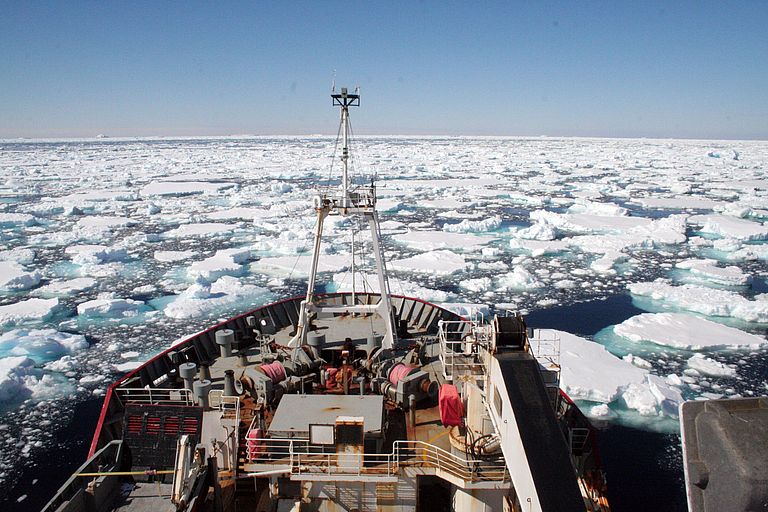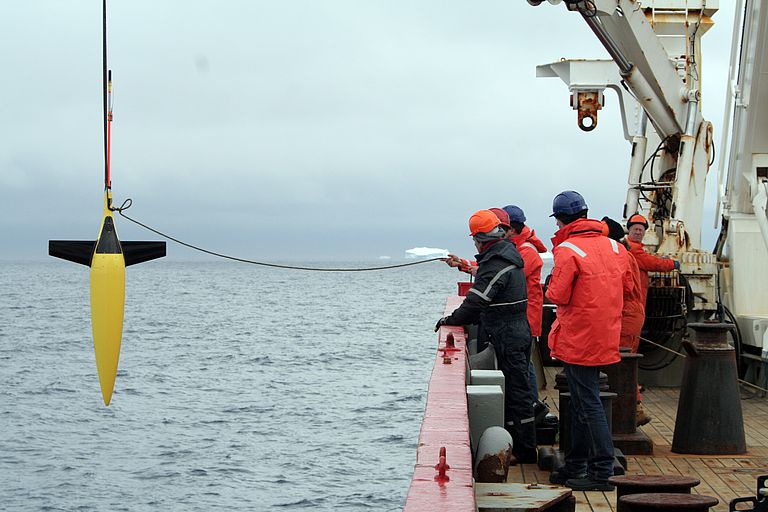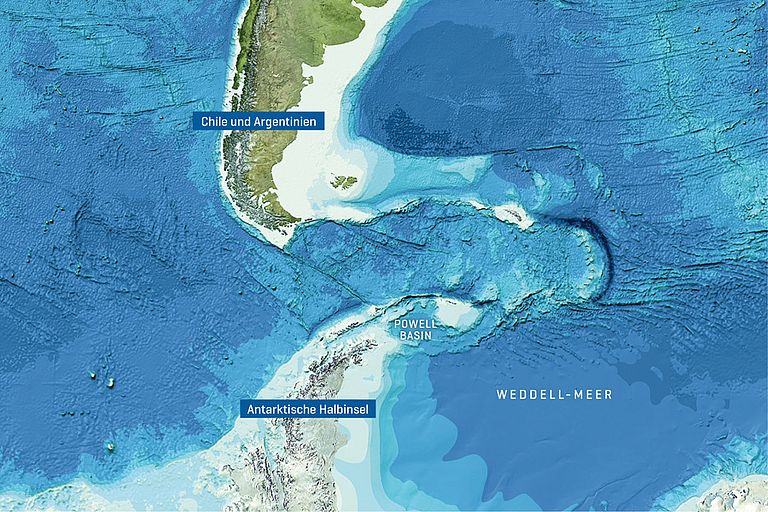Eddies below the Ice
International research team observed previously unknown mixing processes in the Antarctic Ocean
For the full English press release see: http://www.caltech.edu/content/robotic-ocean-gliders-aid-study-melting-polar-ice
Reference:
Thompson, A. F., K. J. Heywood, S. Schmidtko, A. L. Stewart (2014): Eddy transport as a key component of the Antarctic overturning circulation. Nature Geoscience, Advance Online Publication, http://dx.doi.org/10.1038/ngeo2289
For high-resolution images got to the GEOMAR image database.
Contact at GEOMAR:
Jan Steffen (Communication and Media), Tel.: +49 (0) 431 600-2811, jsteffen(at)geomar.de

The British research and supply vessel RRS JAMES CLARK ROSS in the Antarctic ice shelf. Photo: S. Schmidtko, GEOMAR

Launch of an oceanographic glider from the RRS JAMES CLARK ROSS. Photo: S. Schmidtko, GEOMAR

The data were measured with the help of gliders around the Powell Basin on the northern tip of the Antarctic Peninsula. Image Reproduced from the GEBCO world map 2014 www.gebco.net,


